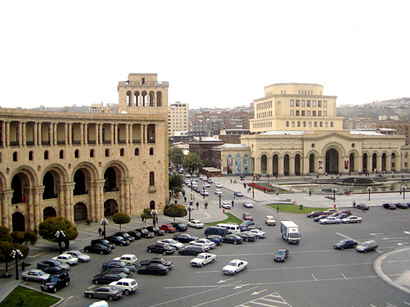Baku, Azerbaijan, Aug. 10
By Elmira Tariverdiyeva – Trend:
Soon after obvious signs from Washington regarding the desire to enter the Armenian energy market, the country’s government revealed plans to freeze electricity tariffs until 2036.
The concept of Armenia’s energy development until 2035 will be submitted for consideration of the government in September, and it will indicate that electricity tariffs in Armenia will remain unchanged until 2036, the country’s Minister of Energy Infrastructures and Natural Resources Ashot Manukyan said Aug. 10 at a government meeting.
He noted that the concept was submitted to the Armenian government three times, but was returned with remarks.
“Currently, there seem to be no problems, except the fact that the issue regarding a stabilization fund, which will make it possible to keep energy prices at the current level, has not yet been agreed upon,” Manukyan said. “This is an ambitious program. To this end, we are seeking funds, and the stabilization fund will allow in the early years to level at least external influence on the tariffs.”
Everyone saw how increasing of electricity tariffs affected the population of Armenia in the summer of 2015, when an attempt to raise electricity prices led to long rallies dubbed “Electromaidan” by media outlets. There were already calls to overthrow the power in Armenia during these protests and a revolution would start if the authorities didn’t sneak back.
Now Yerevan wants to protect itself from this scenario by freezing energy tariffs for 18 years. This is an ambitious plan for a totally sick economy, if one doesn’t know that help may come from the north.
The case is that currently, 82 percent of Armenian energy sphere belongs to Russia. This includes the leading enterprises of the industry - Gazprom Armenia CJSC, Hrazdan Thermal Power Plant, Electric Networks of Armenia CJSC, Sevan-Hrazdan Cascade of hydroelectric power plants. One should especially note the Metsamor Nuclear Power Plant, one of the main sites of the Armenian-Russian cooperation. The EU and the US dream to close this plant, which ensures about 30 percent of Armenia’s electricity generation.
And it is clear that Western countries wouldn’t want Russia to continue possessing such a powerful lever of influence on Armenia. The US and Western countries realize that they have missed a lot of opportunities in the energy market of Armenia, and this fact makes Armenia politically and economically even more loyal to Russia, so the US and Western countries are now trying to make Yerevan an offer Armenia won’t be able to refuse from.
The US offensive on Armenia’s energy market began in 2015, when the US company ContourGlobal bought the Vorotan Cascade of hydroelectric power plants for $180 million. In February 2017, US Ambassador to Armenia Richard Mills promised that in the coming years the company will invest another $70 million in the Vorotan Cascade, and more than 150 jobs will be created.
In May 2017, seven US companies present at the Renewable Energy Conference in Yerevan said they are ready to invest up to $8 billion in Armenian energy sphere.
There have even been rumors that US companies may outbid assets in Armenia’s energy sector from Russia, since, apparently, RusHydro company will soon put up for sale the Sevan-Hrazdan Cascade, consisting of seven hydroelectric power plants, because RusHydro allegedly decided to get rid of assets in Armenia after the “Electromaidan” in 2015.
However, one has a feeling that somebody wants to protect Armenia from the shocks like “Electromaidan” by excluding the possibility of increase in energy prices. This is someone who benefits from the current situation and who doesn’t want to change anything in Armenia’s energy market.
This will cost a lot - even if one assumes that the Armenian national currency, the dram, will no longer be affected by inflation, which is impossible, energy generating equipment will become obsolete, and depreciation expenses should still affect the energy tariffs.
Moreover, the US company that manages the Vorotan Cascade may also raise tariffs for its products, and it turns out that Russia, which is likely to help create the stabilization fund, is even ready to pay Americans only to prevent them from entering the Armenian energy market.






